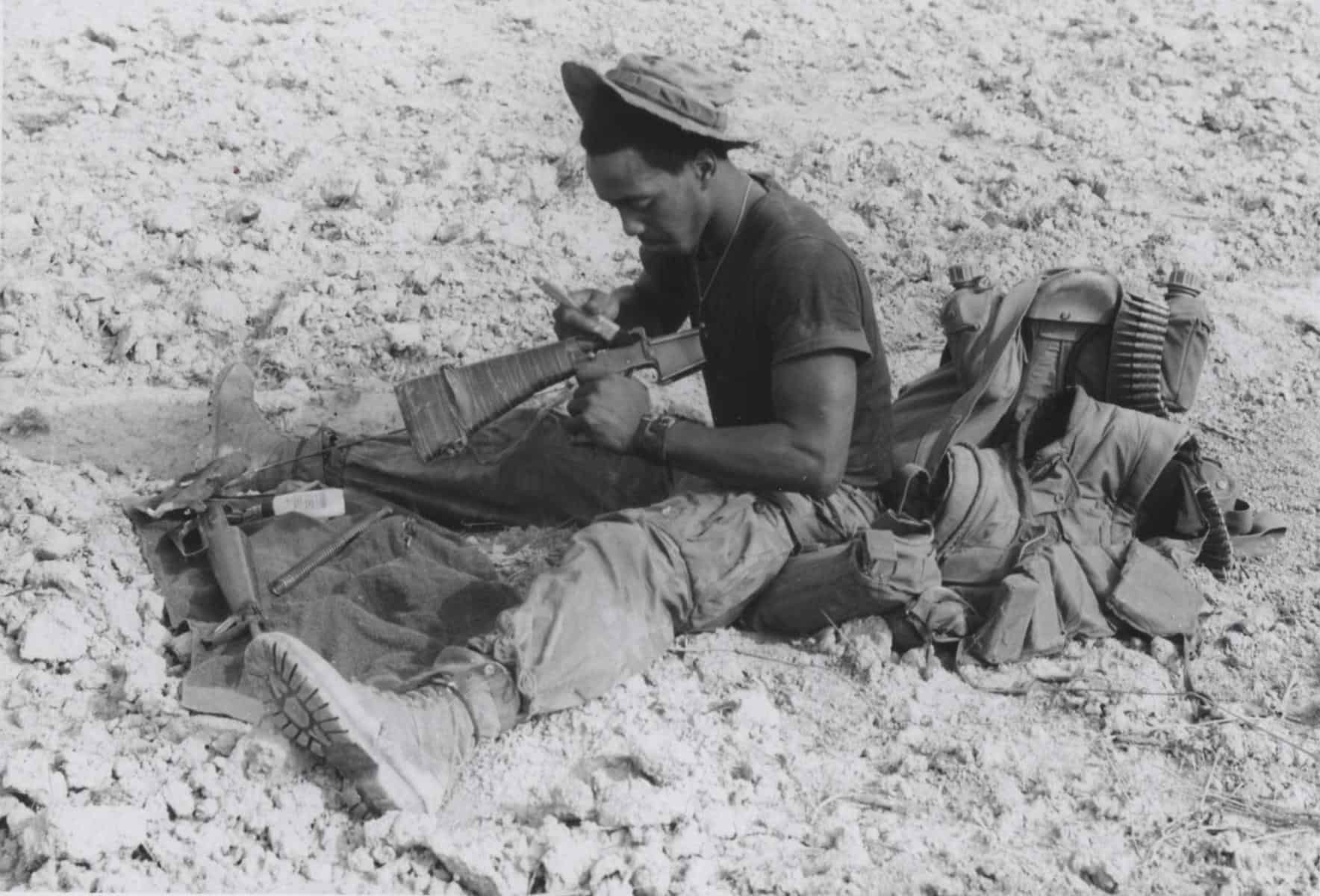
ADVERTISEMENT - CONTINUE READING BELOW
Drawbacks of the M16 in Vietnam
The M16 was ordered into production in March of 1964, and by the end of that year, the first models had been shipped to Vietnam and distributed to front line troops. The new rifles were widely panned. While the M16’s lighter weight when compared to its predecessor was a huge advantage, many troops reported that the new rifle was prone to jamming, especially at the most inopportune moment, when firing at the enemy – which, all things considered, is as inopportune as a moment can get.
Before long, dramatic tales were making the rounds, of entire patrols wiped out, their bodies discovered next to their jammed rifles, their dead hands clutching cleaning rods, testimony to their last harrowing moments on earth, spent in feverish attempts at clearing stuck cartridges. Whether such tales were actually true or were greatly exaggerated over dramatizations, it was clear that the new rifles had some problems, chief among them that they were prone to jamming. At least more prone to jamming than were their predecessors.
M16s were – and their progeny to this day still are – meant to be well maintained and cared for. Unlike AK-47s, which use a piston to extract empty rounds and chamber new ones, M16s run on a direct gas impingement system. When an M16 is fired, some of the expanding gas from the exploding cartridge goes into a small hole drilled into the barrel. From there, the gas is redirected via a tube back to the firing chamber. There, it hits (impinges) the bolt, forcing it back, extracting the now empty cartridge and chambering a new round.

ADVERTISEMENT - CONTINUE READING BELOW
A drawback of the direct gas impingement system is that, by blowing fired cartridges’ gas directly into the firing chamber, it also blows those cartridges’ residue in there as well, fouling the chamber. Hence, the need for frequent cleaning. The M16 was designed to fire a cartridge that used a specific powder to minimize that problem, but when the US Army discovered that the special powder could not be readily mass produced in 1964, it replaced it with an alternate that produced significantly more fouling.
The Army then made the problem worse by billing the M16 as a self cleaning rifle, when no such weapon has ever existed, nor likely ever will. The military then further exacerbated the problem by failing to issue the troops with cleaning kits, or to instruct them on how to go about cleaning their new rifles. On top of that, the firing chambers lacked chrome plating, leading to increased corrosion. When the inevitable jamming resulted, the original M16s lacked a forward assist – a device to manually push the bolt fully forward if it failed to do so on its own. It was a perfect storm of screwups.

